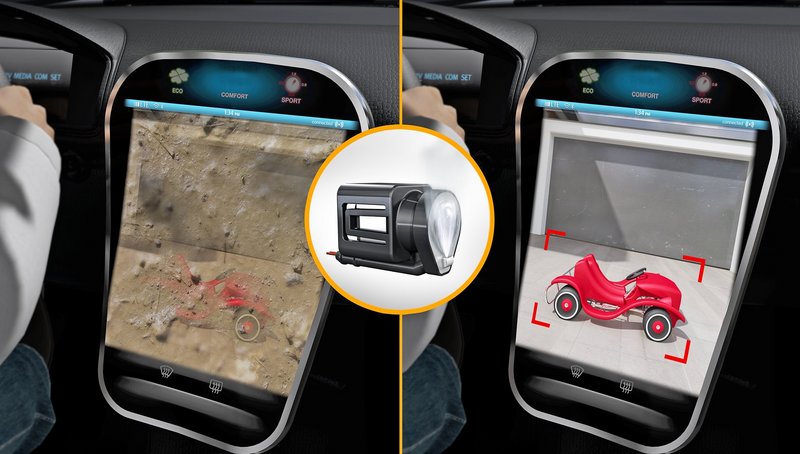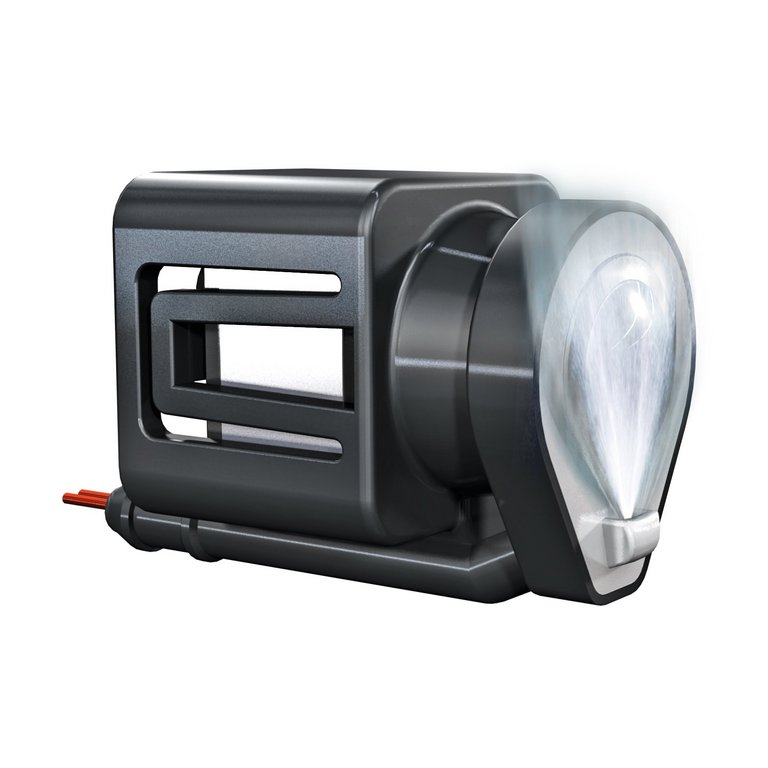Better visibility, less accidents: Keep a clear view with camera cleaning systems from Continental
- The lens of the fish-eye camera is cleaned by an automatically triggered water jet whenever it gets dirty
- Camera cleaning ensures reliable camera data for Automated Driving
Frankfurt/Shanghai, April 20th, 2017. Everyone wants to keep a clear view – including through the cameras installed in the car. The technology company Continental has developed a cleaning system for fish-eye cameras that uses a water jet to remove dirt on the lens. Increasing numbers of assistance functions are being introduced on the basis of these wide-angle cameras, with the result that they must be ready for use at all times. As rear-view cameras, they help drivers during reversing maneuvers, which are the cause of a particularly high number of accidents. According to the US government, these are responsible for an average of 210 deaths and 15,000 injuries every year. A study by the American National Highway Traffic Safety Administration (NHTSA) shows just how useful the camera can be: The universal use of rear-view cameras throughout the country could not only greatly reduce the number of injuries but also save up to 69 human lives every year. That is why all new vehicles in the USA will have to be equipped with rear-view cameras as of 2018.
Fish-eye cameras are also installed in vehicles to provide functions such as automated parking on the basis of a Surround View system, which consists of four cameras at the front and rear as well as in the wing mirrors in order to provide 3D all-round vision, and they are also installed as a replacement for wing mirrors. Due to the positions at which they are installed in the vehicle, these cameras are exposed to the effect of the weather and dirt, for example in the form of snow, ice, and dust. They therefore need to be cleaned in order to guarantee functionality. "With our camera cleaning system, we are not only increasing road traffic safety but are also improving driver comfort. Drivers can happily leave the task of cleaning the camera to the system," says Matthias Matic, Head of the Hydraulic Brake Systems business unit at Continental. Manual cleaning will soon be a thing of the past. "Technologies that are up and running at all times are the only way to prevent accidents. Our camera cleaning system makes an important contribution to achieving our vision of accident-free driving – our Vision Zero," continues Matic.
Automatically triggered cleaning of the camera lens
Whereas the ‘Night Vision‘ cleaning system is already in series production, the ‘Surround View’ camera cleaning system will be available in vehicles by 2019. A water jet thereby cleans the camera lens. The camera detects the level of contamination on the lens without operator intervention and automatically triggers cleaning. "Dirty camera lenses are a risk when driving," says Thomas Werner, Head of Development Washer Systems at Continental. "With our camera cleaning system, we make sure that cameras are up and running whatever the weather conditions. To do this, we can call on many years of experience in the field of cleaning systems." The cleaning water is fed through a system of tubes from the water container to a nozzle that is mounted directly at the camera lens. The water pressure can be adjusted from 2.0 bar to 4.5 bar and can be defined individually by the vehicle manufacturer. The water jet passes across the curved surface of the lens and completely removes any dirt. The anti-freeze present in the water container prevents the water from freezing on the camera lens. Alternatively, heated cleaning systems are also available. In this case, a heating conductor is integrated in the water feed system and warms the supplied water to prevent it from freezing.
The number of surrounding sensors, such as cameras, installed in cars, will continue to grow in the future as the level of automation increases. It is therefore becoming ever more important to ensure that they are kept clean. Alongside radar and LiDAR, cameras are the third type of vital surrounding sensor underpinning Automated Driving. A basic prerequisite for driver assistance functions and automated driving is the reliable detection and precise evaluation of the vehicle's environment. A "clear view" is vital if sensors such as cameras are to capture the surrounding and provide important surrounding data.

